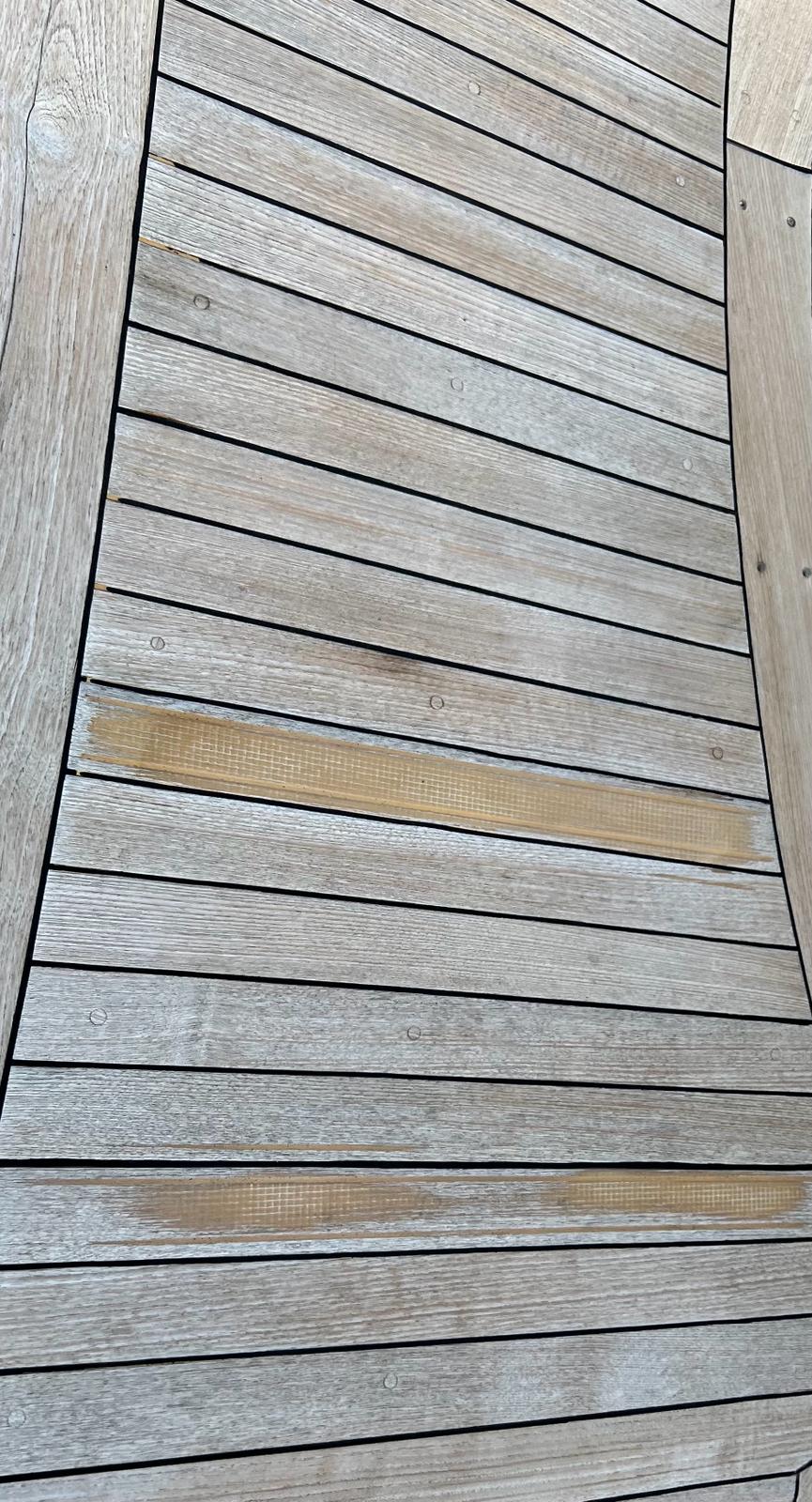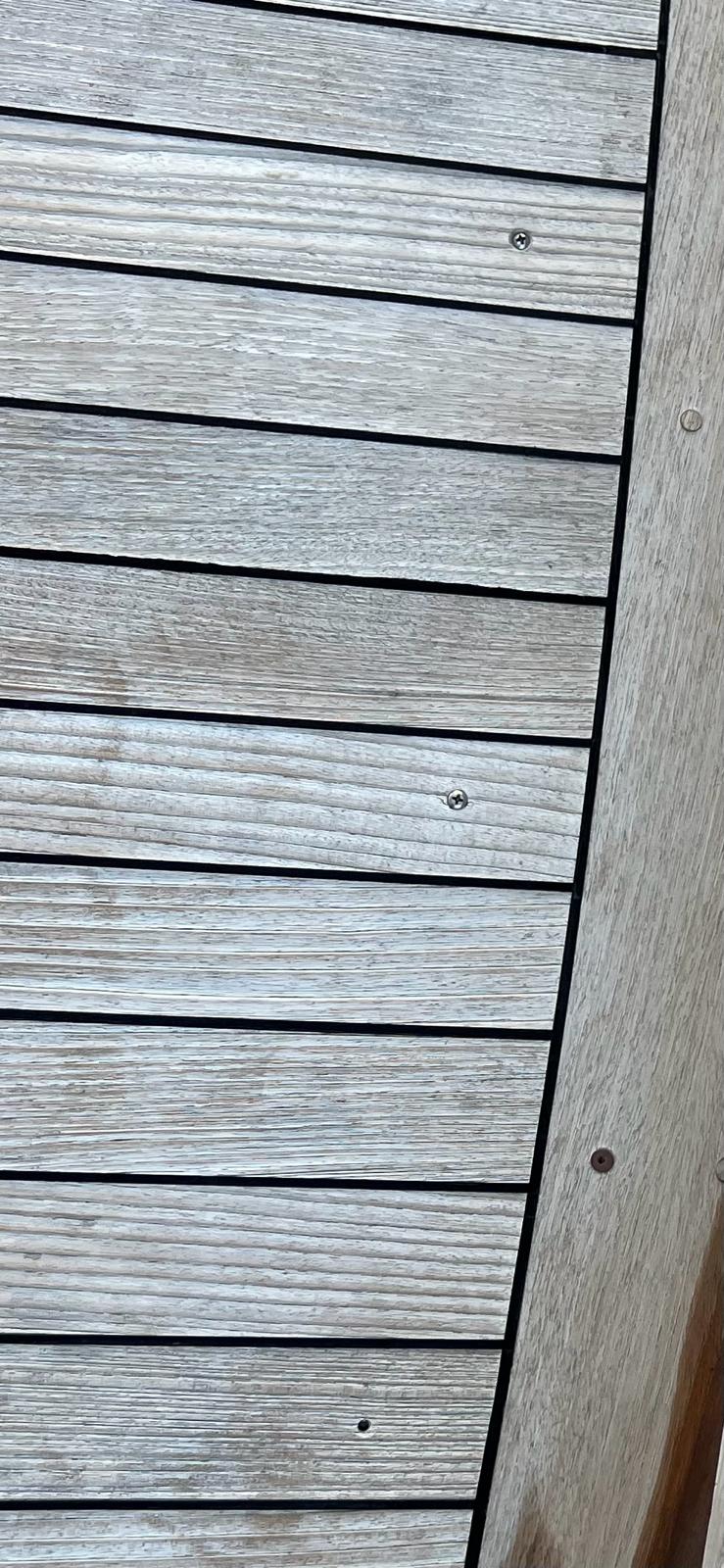Ensuring the longevity of large yachts through Materials Mastery.
Case Study – Teak Deck Deterioration due to improper cleaning practices.
Introduction: Teak decking is a popular choice for its aesthetic appeal, durability, and natural resistance to moisture and decay. However, improper cleaning practices, including the use of harsh chemicals and abrasive cleaning methods, can accelerate the deterioration of teak decks on yachts and marine vessels. This case study explores a scenario where teak deck deterioration was attributed to the use of wrong cleaning chemicals, highlighting the consequences, investigative approach, laboratory analysis, and preventive strategies.

Scenario – A 47m sailing yacht with a teak deck, known for its elegance and classic appearance, experienced accelerated deterioration of the decking material. The teak deck, once a focal point of the yacht’s aesthetics, began showing signs of discoloration, roughening, and surface damage, raising concerns among the yacht owner and crew members.
INVESTIGATE APPROACH
Visual Assessment: A detailed visual inspection of the teak deck was conducted to document the extent of deterioration, including discoloration, cracking, and loss of natural oils, and to identify areas where improper cleaning practices may have contributed to the damage.
Laboratory analysis: Chemical analysis was performed on samples of deteriorated teak decking material collected from various areas of the deck to identify any chemical residues or changes in the wood composition due to exposure to cleaning agents. The surface morphology of the teak deck, including signs of abrasion, etching, or damage caused by cleaning chemicals, was examined. Elemental composition of the teak surface was determined to identify any chemical contaminants from cleaning agents.
Cleaning History Review: The yacht’s maintenance records and cleaning practices were reviewed to identify the types of cleaning agents, chemicals, or methods used on the teak deck, including any deviations from manufacturer recommendations or industry best practices.
Material Integrity Assessment: The structural integrity of the teak deck was evaluated to determine the extent of damage caused by improper cleaning, including changes in wood density, surface roughness, and susceptibility to moisture absorption or fungal growth.
Findings and Analysis:
Chemical Damage: Laboratory analysis confirmed the presence of acidic or abrasive residues on the teak deck, indicating exposure to harsh cleaning agents that had altered the wood’s composition and surface properties.
Surface Deterioration: Laboratory imaging analysis revealed micro-abrasions, scratches, and surface etching on the teak deck, consistent with damage caused by improper cleaning practices and abrasive chemicals.
Loss of Natural Protection: Chemical characterization indicated a depletion of natural oils and resins in the teak wood, leading to increased porosity, reduced moisture resistance, and accelerated weathering of the deck material.
Preventive Measures and Remedial Actions:
Corrective Cleaning Procedures: Implementation of gentle cleaning methods using mild, teak-specific cleaners, soft brushes, and gentle scrubbing techniques to remove dirt and stains without damaging the wood surface, natural oils and yacht topcoat.
Restoration of Natural Oils: Application of teak oils, sealants, or special protective coatings to replenish the lost natural oils, enhance the wood’s resistance to moisture and UV exposure, and restore the luster and colour of the teak deck.
Education and Training: Providing crew members and maintenance staff with proper training on teak deck care, including the selection of suitable cleaning products, techniques for safe cleaning, and adherence to manufacturer guidelines for maintenance.
Regular Maintenance Schedule: Establishing a regular maintenance schedule for teak deck cleaning, conditioning, and inspection to monitor the wood’s condition, address any signs of deterioration promptly, and ensure long-term preservation of the decking material.
Conclusion – The case study highlights the importance of laboratory analysis and in deep research in identifying the effects of wrong chemicals on teak decking. By combining visual assessments with scientific analysis, yacht owners and crew members can better understand the impact of cleaning practices on teak decks, implement preventive measures, and preserve the beauty and longevity of this iconic decking material on marine vessels.


These images show teak deck failures.

